#phoenician paganism
Explore tagged Tumblr posts
Text
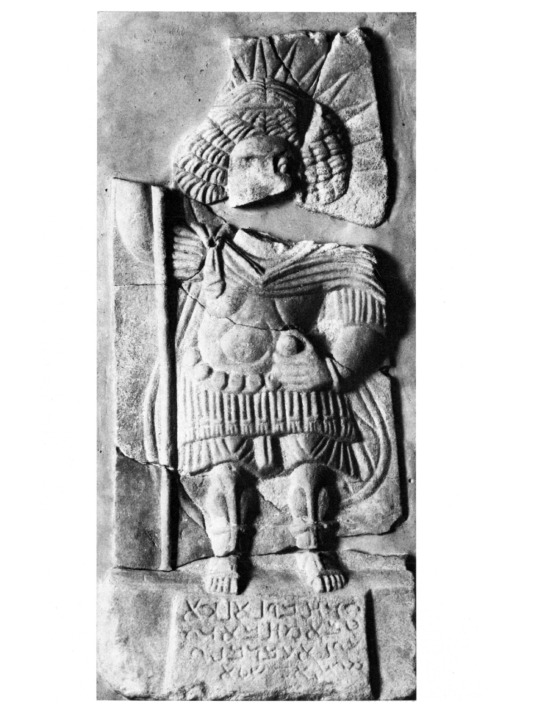

Yarhibol, the Sun-God Dura-Europos, Syria c. 50 CE Source: The Pantheon of Palmyra by Javier Teixidor, 1979
#yarhibol#dura europos#canaanite paganism#canaanite polytheism#canaanite gods#levantine paganism#phoenician#phoenician paganism#phoenician polytheism#phoenician gods#syrian paganism#syrian polytheism#syrian gods#natib qadish#pagan#paganblr#paganism#polytheism#witchcraft#witchblr#magic#occult
84 notes
·
View notes
Text
Lilith and Ishtar are not interchangeable that’s really disrespectful to say.
#lilith#ishtar#demonolatry#paganism#semitic paganism#canaan#phoenician paganism#Demonology#near east#mythology#assyrian neopaganism#folk religion#country religion
14 notes
·
View notes
Text




L–R: The Asherah, the Mizbeach, and the Massebah

𒀭Yarikh 🌒 and 𒀭Ashtart ♀

Shulmu 𒁲𒈬. I was able to perform my first regular offerings yesterday evening and I'm very happy about it! I used almost all natural elements as you can see and it went pretty great I feel. As you can expect with me, it wasn't quite as organized as had perhaps been hoped, but I made sure to guard against carelessness and be reverent and I believe the Deities understand. At the very least they may have gotten me back when a thorn branch walloped me right in the nose as I was making my way out of the woods :P
I paid honors to 𒀭El, Creator of Earth, and His House (water for gratitude), 𒀭Ba'al the Victorious (contents of my heart for the protection of trans and queer people), and 𒀭Anat Mutilated (I'd prefer to keep the specifics of this one private). I'm very excited to spend more time learning and practicing with the Elim. I think I'll probably start performing offerings weekendly if I'm able. I've been keeping up with my daily prostrations to 𒀭Shapash to the extent I've been able to as well, though I substituted them with hymns yesterday evening and this morning due to fatigue and hurting myself on something at home (I'm ok now! <3).
I'd like to thank everyone within the Semitic Pagan and Kemetic communities who's helped me along so far, especially J. Sullivan who's provided me with a wealth of great info and advice lately :)
#pagan#paganism#semitic pagan#semitic paganism#ancient levant#baal#bronze age#history#ancient near east#ancient history#canaanite pagan#canaanite paganism#canaanite#canaan#canaanite polytheism#polytheist#polytheism#phoenician#phoenicia#punic#anat#el#yarikh#astarte#faith#religion#spirituality#altar#ritual#shapash
7 notes
·
View notes
Text

Mušḫuššu dragon from the Isthar Gate 𒈲𒍽
#Inanna#Ishtar#Sumer#Akkadian Empire#Mesopotamia#Babylonia#babylonian cosmology#babalonian polytheism#mesopotamian polytheism#sumerian cosmology#sumerian polytheism#mesopotamian cosmology#akkadian polytheism#akkadian cosmology#assyrian polytheism#assyrian cosmology#phoenician cosmology#phoenician polytheism#love goddess#fertility goddess#paganism#war goddess#babylonian polytheism#polytheism#The Queen of Heaven#Queen of Heaven#Phoenicia#Astarte
8 notes
·
View notes
Text




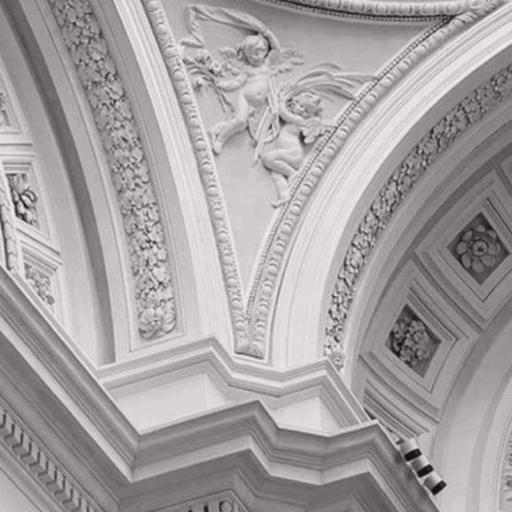



Asherah/Athirat/Elat = Mother goddess, queen of heaven, goddess of fertility, lady of wisdom, goddess of the seas, the creator of the gods together with the god El, queen of the gods, the one who walks on the sea, patron saint of sailors and fishermen
Athirat is a powerful Goddess, and the other Gods often ask Her to help them, or to try to influence her husband El for their good. As guardian of Wisdom, She is the one who chooses the successor of Aleyin (an aspect of Ba'al as the God of dying vegetation) and, after his death, She instructs Anat in the proper ritual necessary to ensure the fertility of the vines.
Like Ashtart, Athirat is associated with the lion. She is usually shown as a nude Goddess with curly hair covering her breasts with her hands. She is also associated with the snake, and an alternative name for Her is Chawat, which in Hebrew translates as "Hawah", or in English "Eve"; so She may well be the root of the biblical Eve. Like the Carthaginian goddess Tanit, whose name means "Serpent Lady", Athirat was represented as a palm tree or pillar with a snake coiled around her, and the name Athirat derives from a root meaning "straight".
Athirat is associated with the Tree of Life, and a famous ivory box lid of Mycenaean finish found at Ugarit, dated 1300 BC, shows it symbolically representing the Tree. She wears an elaborate skirt and jewelry, and although she is topless, her hair is delicately styled; She is smiling and in her hands holds sheaves of wheat, which she offers to a pair of goats.
#history#Asherah#asherah goddess#asherah#Goddess#canaanite religion#canaanite mythology#Phoenician mythology#mythology#biblical#biblical mythology#athirat#Mother#Biblical goddess#pagan#God's wife#El'wife#Wife of god#yahweh#God
88 notes
·
View notes
Note
The last year has been a massive wakeup call for me as a gentile in a lot of ways. But one of the things that's stuck out to me is the realization of just how staggeringly moronic it is to see pro-pals say they have nothing against Jews, just Zionists, with a straight fucking face. If your tolerance towards Jews only extends towards at best 20% of the global Jewish population...I mean holy shit guys. That is NOT the showing of solidarity that you think it is.
So, part of it comes from the public perception of Zionism (from propaganda) vs the reality. The public perception is that Zionism is an evil, oppressive, colonial attempt to steal land from these poor, innocent Palestinians (who weren't even called that before the end of WW2). I'll deal with the reality of this in the next paragraph. And so, this view, propaganda pushed by Iran, Russia, and their puppets, has become heavily entrenched in the Left, because it hits all those lovely buttons that most Leftists have installed because of bullshit ideological purity, and that's an entire other rant.
The reality is this. The basic idea of Zionism is that the Jewish people should have self determination in their indigenous land. The only other ethnic group from that linguistic-ethnic group is the Chaldeans, who are largely Aramaic speaking Eastern Rite Catholics, and they consider their homeland to be ancient Chaldea, in modern-day Iraq. The Carthaginians are dead, the Phoenicians absorbed into everywhere else. And also the Samaritans, which are... complicated, but largely never left Samaria, and number about 900 people.
Zionism has many branches, and yeah, some of those are kind of shitty. And you can find shitty branches of any other group. Among Leftists, we have Tankies. And this isn't 'anyone I don't like is a Tankie', this is 'Authortarian Leftists and those who support Authortarian rulers who claim to be Leftist, or just will support anyone who opposes the US are tankies.'
But let's focus on our own bad branches before we go after someone else's. I personally find the Kahanists to be reprehensible, but at the end of the day, I'm a goy, and unless I'm tagged in by a Jew to go after them, that's their own internal shit to deal with. With all my groups, I've got volkist pagans (and despite bullshit claims, Zionism isn't volkist), tankies, and dealing with the shitty centrists in the Democratic party (because until we have national fucking ranked voting, we gotta deal with the party system as it is).
#antisemitism#leftist brainrot#leftist antisemitism#what is zionism#zionism#paganism#pagan volkists#tankies#fuck tankies
36 notes
·
View notes
Text
Ashtaroth | Ishtar Etymology
I have been wanting to do this post for a while! But have been putting it off because it's so detail intensive. >>
Astaroth, as is the most common romanization in modern works, is a goetic daemon with a fairly cut and dry pagan ancestry. The spelling Ashtaroth is closer to or more evocative of her etymology of origin- Astarte, which is another name for Ishtar or Inanna.
Ishtar, Astarte, and Inanna are all fairly ubiquitously agreed to be different names for the same goddess. Her cult was something extremely widespread across the near east in ancient times, with Ishtar being the Akkadian, Assyrian, and Babylonian name, Inanna the Sumerian name, and Astarte the Phoenetian and Cannanite name.
I say these names refer to the ‘same’ goddess the same way many modern individuals view Zeus and Jupiter as wholly interchangeable- largely because it was not just one similar divinity but the entire pantheon and family structure shared between cultures with few differences besides names. However, as with any divinity who has been distinguished out to multiple identities, each name would still hold individualized minutia and slight specific connotations. I don't want that to get erased by trying to explore the broader spectrum of how this goddess or these goddesses have been connected and transformed as they have walked across cultures.
Astarte's name is the etymological origin of the Hebrew word astarot, meaning- and I say this tentatively as I am far from an expert on hebrew- progeny or increase, which comes from Astarte’s associations with fertility. Further, she is one of a handful of pagan gods directly referenced in the Bible. She is given as an example of an enemy god that is supporting enemy nations of the Bible's protagonists, in this case the Phoenicians.
Obviously, the nature of colloquial language doesn't seem to care about her bad reputation among Abrahamic religions. Despite being decried as a demon tempting man from the path of Yhwh, her name was shifted and adopted into the language. It's easier to see how ‘Astarot’, when carried through over the hundreds of years, was shifted into ‘Astaroth’ as occultists and priests tried to understand demons in the Bible.
Ishtar is, inherently, a very gender fucky individual, though despite this fluidity is very specifically a goddess and uses she/her pronouns in historic sources. Unfortunately it wasn't simple confusion, but rather the general rampant sexism of the time this research was being done that lead to Astaroth and every other demon in the Ars Goetia being demoted as male.
Ishtar’s holy symbol was an 8 pointed star, as she was associated with the heavenly body Venus, the morning star. (A friendly reminder the planets as we know them were considered as stars in ancient times, though they often held notable importance over other heavenly bodies further from us.) Similarly, the sigil for Ashtaroth prominently features a 5 pointed star, and is the only of the Goetic sigils to do so. So, it's easy to say that more than nearly any other entity Astaroth has the most direct and clearest tie to her pagan roots.
#pagan#paganism#eclectic pagan#demonolatry#theistic satanism#astaroth#astarte#ishtar goddess#inanna#mesopotamian pagan#ashtaroth
23 notes
·
View notes
Text
Deep dives into folklore: Portuguese folklore
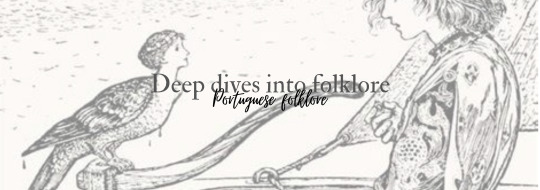
Portuguese folklore, a mesmerizing mosaic of myths and legends, serves as a profound testament to the cultural heritage of the nation. Woven over centuries, this intricate tapestry reflects the dynamic interplay of historical influences, blending the legacies of Phoenicians, Romans, Moors, Celts, and Christians. Rooted in a diverse historical landscape, Portuguese folklore encapsulates the essence of the country's identity, encapsulating the collective imagination of its people. As we embark on a deep dive into this mystical realm, we unveil the stories, characters, and cultural significance that have endured through the ages, illuminating the captivating spirit of Portugal's folklore.
Portuguese folklore has deep roots in the country's history, blending influences from various civilizations that have shaped the region over millennia. Phoenician, Roman, Moorish, and Celtic influences, among others, have contributed to the diverse range of myths and legends that make up Portugal's folklore.
One of the earliest influences on Portuguese folklore is the Roman presence in Lusitania. The Romans introduced their own deities and myths, blending with the existing indigenous beliefs. As Christianity took root in the region, a symbiotic relationship developed between pagan and Christian elements, resulting in a unique blend of folklore that reflects Portugal's cultural identity.
The Lusitanian Mythical Heritage:
Before Roman rule, the Lusitanians, an ancient Celtic people, had their own pantheon of deities and mythical beings. The god Bandua, associated with war and protection, and the goddess Ataegina, linked to fertility, are examples of Lusitanian figures that persisted in local folklore.
The Moura Encantada:
The Moura Encantada, or the Enchanted Moorish Maiden, is a prominent figure in Portuguese folklore. These mythical beings are often beautiful women with magical powers, dwelling in hidden places or trapped in enchantments. Stories of love, loss, and magical intervention surround the Moura Encantada, emphasizing themes of fate and destiny.
The Lobo Ibérico (Iberian Wolf):
Wolves hold a significant place in Portuguese folklore, symbolizing both danger and wisdom. The Lobo Ibérico is a recurring motif, representing the untamed wilderness and the struggle for survival. Folk tales often feature wolves as shape-shifters or mystical guardians, embodying the complex relationship between humans and nature.
The Barco da Roda (Wheelbarrow Boat):
Coastal regions of Portugal have tales of the Barco da Roda, a phantom boat that appears during storms. Believed to be a harbinger of doom, this spectral vessel is associated with the souls of the deceased. The folklore surrounding the Barco da Roda reflects the maritime culture and the inherent connection between the Portuguese people and the sea.
Portuguese folklore serves as a mirror reflecting the collective consciousness of the nation. It embodies the struggles, triumphs, and enduring spirit of the Portuguese people. The fusion of pagan and Christian elements in folklore illustrates the adaptive nature of Portugal's cultural identity.
Festivals and celebrations often incorporate folklore, with traditional dances, music, and costumes bringing mythical characters to life. The Feast of São João, celebrated across Portugal, features rituals and customs that trace their roots to ancient solstice celebrations, merging pre-Christian traditions with Christian elements.
In conclusion, Portuguese folklore is a captivating journey through the cultural tapestry of a nation. Its origins in diverse historical influences, the presence of mythical figures like the Moura Encantada and the Lobo Ibérico, and its cultural significance in festivals and celebrations all contribute to the richness of Portugal's folklore. Through the ages, these stories have been passed down, evolving and adapting while preserving the essence of Portugal's enchanting heritage.
Taglist (reply or reblog to be added): @axl-ul @crow-flower @thoughts-fromthevoid @alderwoodbooks @harleyacoincidence @tuberosumtater @sonic-spade @theonlygardenia @holymzogynybatman @nulliel-tres @w0rkah0licz @sylvanthorn @tigertaurus22 @profiterole-reads @mathias-musings @1899adgg1997tbmd @grimmparanormalinvestigations
#writeblr#writers of tumblr#writing#bookish#booklr#fantasy books#creative writing#book blog#ya fantasy books#ya books#deep dives into folklore#deep dives#folklore#mythology#portuguese#portuguese folklore
31 notes
·
View notes
Text
The point of the Christian life is not to distinguish oneself from the ungodly, but to stand in radical solidarity with everyone and everything else. This is the full, final, and intended effect of the Incarnation—symbolized by its finality in the cross, which is God’s great act of solidarity instead of judgment. Without a doubt, Jesus perfectly exemplified this seeing, and thus passed it on to the rest of history. This is how we are to imitate Christ, the good Jewish man who saw and called forth the divine in Gentiles like the Syro-Phoenician woman and the Roman centurions who followed him; in Jewish tax collectors who collaborated with the Empire; in zealots who opposed it; in sinners of all stripes; in eunuchs, pagan astrologers, and all those “outside the law.” Jesus had no trouble whatsoever with otherness. In fact, these “lost sheep” found out they were not lost to him at all, and tended to become his best followers.
The Universal Christ_ how a forgotten reality can change everything we see, hope for and believe-SPCK_Society for Promoting Christian Knowledge (2019) (Richard Rohr)
2 notes
·
View notes
Text
What happened to the Old Gods?
For thousands of years, humans of various cultures, nations, and peoples across the world worshiped an equally amount of varied gods. And then suddenly, at least in Western Europe and the Americas, the influence of these gods waned. In this post and over the next few posts I will propose that a plurality of gods coexisted and worked with nature and humanity to maintain balance and that the community of the Western gods suffered a period of collapse in which the Western God achieved his current hegemony. In a future post I plan to talk about how there is a current movement of rebellion or upheaval in the heavens, as well as about the relationship between the gods, nature, spirits, and humans.
I am approaching this with a careful but honest belief that the divine is real and that God, Jesus, the Western God, and the so called "pagan" gods are (or at least were) real. I will also be focusing on God, Western Europe, and the Americas (here and throughout the blog), as these are the areas I am most familiar with. Lastly, I stand by the truism that history is written by the victors, so while I may use the Bible as a source, I will approach it with academic skepticism. With all that out of the way, let's begin.
Before the rise of Christianity, once could find a diversity of gods across the world. These were seen as tribal or local gods. That is, their worshipers largely recognized the existence of other gods that ruled over the same aspects of nature, but that were distinct from their own gods and belonged to other regions and people. Examples of this are Hades and Hel, from Greek and Norse religion respectively. These two gods ruled over similar realms (the realm of the dead), but were limited in their jurisdiction by geography and by who their followers were. We also see examples of gods spreading across regions, sometimes adopting different aspects as they do. One way in which this happened was when people colonized an area and brought their gods with them, as was the case with Ancient Carthage being ruled by Phoenician gods. If a god and their people had enough influence, they could also expand to new regions, although this usually caused them to undergo changes as they were adapted to and by the new environments they encountered. Such was the case when Ares took over the aspect of war in Rome and became Mars, and similarly when Gaulic people adopted Mars under the name of Albiorix. These were likely all the same entity, but rather than be worshiped as one god, it chose to, or was forced to, adopt different aspects that better suited the cultures it encountered. Thus we see a world where various gods existed within a changing landscape of realms and personalities.
There is one more way in which gods expand and replace others: warfare. A famous example of this is found in the books of Exodus and Joshua, where the followers of God conquered the people of Canaan and slowly tore down their gods. The relationship between humans and the gods is not the focus here, but it is well known to be symbiotic to some degree. With believers gone or dwindled, the gods are weakened and easier to depose by another god.
The various gods were, according to the Bible, organized into an assembly of gods or a divine council (Psalm 82 NSRV). It is unknown what God's position in this council was or how many gods belonged to it. But it does reveal that the gods were in some sort of community with each other and that some sort of order existed. This same psalm claims that God has the authority to hold judgement, but as this is an account written by God - even if indirectly - we can not take for granted that this claim of a position of leadership is accurate and that it wasn’t made to legitimize his rule. I will take a detour into the realm of speculation and say that this council likely did not include all the gods on earth or in existence, but may have been limited to those over which God already had authority. That is, the gods God had defeated through conquest and the lesser gods many call angels. If this is the case, this divine council was a prototype for how the Western God would achieve his current hegemony.
Now we turn to how the old gods “went away.” I’m not talking about how their cults were persecuted or their beliefs syncretized into Christianity, although this did play an important role in the Old God’s demise. Instead I am talking about the deities themselves. Here we can only make informed guesses, so here is what I believe happened. A new god, Jesus, arrived on the scene deriving his legitimacy from his claim to be the son of God. Whether this claim is true or not does not matter for our purposes, although it has interesting implications. What matters is that it allowed him to have a head start in the follower gaining game. Whoever Jesus was before the incarnation, he was already a relatively powerful god. He was likely a member of the aforementioned divine council. Following his death and resurrection, his following grew, which in turn gave him more power. Through some clever maneuvering he came to gain influence over the Roman Empire and become its dominant god. Eventually the gods of the Roman pantheon would be weakened, exiled, or incorporated into Jesus’s divine council. The behavior of Christianity from this point forwards indicates a change to the previously egalitarian and regional workings of the divine council into one that was increasingly centralized. With the power of the divine council and a great number of followers, he was able to create the infrastructure that would give rise to the various organized Christian churches.
Then something went wrong. We can’t pinpoint when, how, or why, but at some point Jesus lost control of the divine council, and the Western God took over. This explains the rapid changes to Christianity, including a practical abandonment of its peaceful and loving ethos that remains unpunished to this day. Human activity was likely both a symptom and a cause to this change in heavenly leadership. Ultimately, the chaos in heaven caused or worsened the fall of the Roman empire. It was during this period of upheaval that the gods of the germanic tribes tried to stop the growing power of Jesus or fill the power vacuum the Western God’s rise to power was causing. In the end, it was the Western God who prevailed over Jesus and the other “pagan” gods. Unlike Jesus, the Western God learned from his predecessors and did not rule as one, but rather adopted various identities among the various Christian sects and allowed other gods to wield authority as angels or saints of the divine council.
Most of Christian history has been led by this Western God who usurped Jesus’s place and derives his legitimacy by using the identity of Jesus and of the son of God. I will talk in a future post about how this hegemony has been changing for centuries now and what the new cosmic order could shake up to be.
#christianity#christian theology#catholiscism#christian history#religion#spirtuality#neopaganism#pagan#paganism#paganblr#heresy#blasphemy#cosmology#greek mythology#norse paganism#norse gods#old gods#jesus
3 notes
·
View notes
Text
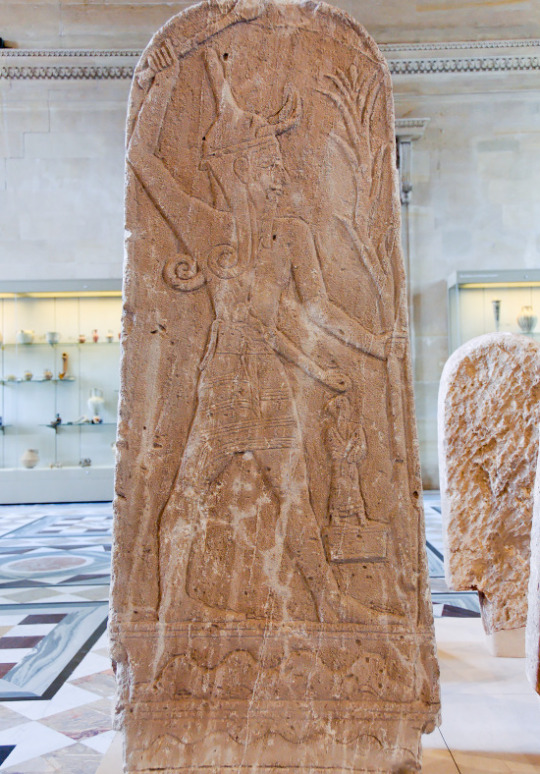
Baal Hadad, God of Storms and Fertility Stele from Tel Burna, Shephelah c. 1400 BCE Source: The Louvre
#baal#hadad#balu#haddu#canaan#canaanite#canaanite paganism#canaanite polytheism#canaanite gods#phoenician#phoenician paganism#phoenician polytheism#phoenician gods#aramean#aramean paganism#aramean polytheism#aramean gods#natib qadish#pagan#paganism#polytheism#magic#witchcraft#occult
127 notes
·
View notes
Note
I hope this question makes sense- but do Italians have their own creation story and/or religion pre-roman history? And does anyone follow those beliefs today?
Ciao! Not sure I really get what you mean by "our own creation story" but... on a general level, we're Catholic Christians, so we follow the Bible (BTW the State is laic, so anyone can follow their religion actually or be atheist).
As for Ancient/Pre-Roman Italy, our country was divided into many areas controlled by different populations with different histories, languages, cultures and probably even cults. To mention a few, we had Greeks (the famous Magna Grecia in Sicily and Calabria, more or less), Latins, Etruscans (who really showed religion through arts -they were also influenced by the Greeks), Sardinians, Celts (center of Italy and North -they founded Brescia, Milano, Bologna...), Samnites, Phoenicians... and even during the Roman's Age, some areas were influenced by Nordic populations (the so called "barbarians") and Eastern populations too -feel free to refer to the Medieval/Roman Age posts I wrote not long ago and integrate it with this: it generally says that Central Italy was influenced by the Greeks and their myths of Eastern origin (as mentioned above) but still some ancient Latin myth were orally passed through generations and it probably was used by ancient orators later on and prolly being used by the Romans too (they in fact had the fabulae = stories told orally, much more than myths). Religions basically moved on from a phase in which there were mostly indigenous cults (pagan/magic)*, then got a big influence by the Greeks and Etruscans (we see objects/deities in human shape and mostly of them are connected with the rural cycle), and then the cult of the Emperor and more Eastern religions (during the Roman Empire).
*For example the Celts, brought their druids who were the connecting piece between Earth and the Spiritual world (you have probably seen many movies or TV shows with them, and even if things were a bit exaggerated, they were still kinda accurate). They had a similar job to the Àuguri of the Roman Empire -already known by the Etruscans as well- who were able to make predictions by looking at the intestines of animals or the flight of birds. Celts were very connected with nature, they carved wood, they used to live in forests and near water, so they didn't even had real "cimiteries" or necropolis as for example Etruscans had, but more of sacred areas in nature.
Now, Idk how many pagans (and of what kind) are around in Italy atm but there could be, as there are in other parts of the world. I think spirituality is a personal thing and again, being a mostly Catholic Nation, with a lay State, there's not much infos about it (or maybe it's just me not caring about others' religious/spiritual matters).
Anyway here you have one last link (in Italian, as the ones I mentioned above) with a little more infos and a map with some of the biggest populutions that were in Italy in the Ancient days. They're divided linguistically, but maybe you can find out more about their religions/cults too.
#it#italian#langblr#italiano#italian language#italian langblr#language#languages#tw religion#paganism#italian history#italian things#italians stuff
11 notes
·
View notes
Text
Proclaiming the Year of Aliyan-Ba'al
KTU 1.78 is quite a peculiar piece of ancient literature. It's an astrological report from Ugarit written in the City's own language and alphabet.¹ Despite being only six lines long, it has been the subject of extended discussion among scholars due to an ominous description of an astronomical event.² This event was identified early on by researchers with a solar eclipse dated to 1375 BCE, but a 1989 reexamination by astronomer Teije De Jong and Assyriologist W.H. van Soldt pointed to another solar eclipse, of 1223 BCE, as a more likely candidate.¹,³,⁴
This challenged the prevailing view of the timeframe of the Ugaritic texts.⁵ An even fuller picture thereof has emerged from research upon texts including those discovered in the house of a Diviner named Agaptharri.⁶ Three of these are particularly intriguing in relation to the Ba'al cycle, one of them even providing insight into the ritual aspect of the myth. It's classified as RS 24.293 and it involves 𒀭Mot, the God of Death who swallows up 𒀭Ba'al before being destroyed by 𒀭Maiden Anat to restore Her Brother to life.⁷
The Fourth Tablet of Ba'al itself, written by the scribe Ilimilku of Shuban under 𒀭'King Niqmaddu IV of Ugarit around the same time as the apparent eclipse, also contains a portion of broken text which bridges 𒀭Ba'al the Victorious' Great Theophany and His instructions to the Lads 𒀭Gapn and 𒀭Ugar to deliver His message to 𒀭Mot. Restoration of the text shows it appears to refer to the Sun, personified as 𒀭Shapshu the Luminary of the Gods, being cloaked in gloom as a grim omen.⁸,⁹ I think it's easy to see the connection I'm making here; I believe these two eclipses can be taken together as a sort of symbolic epoch.
The date was recorded as the Month of Khiyyaru during the New Moon which was the first Day of the Month in the Ugaritic calendar.¹ This lunar calendar has twelve months beginning just before the Autumnal Equinox in September. There was a modern version on Tess Dawson's Natib Qadish website but it's no longer present and I'm interested in repurposing it if I can figure out the math involved (especially with intercalation).
In any case, under the De Jong and van Soldt dating we are now in Year 3248 of Ba'al the Victorious starting in late Summer of 2024 and ending in late Summer of 2025. This is of course the first actual use of such a dating system, so it's only appropriate for it to take place on the civic New Year's Day. Shulmu 𒁲𒈬 and Happy New Year to all!
References
Wyatt, Nicolas. Religious Texts from Ugarit, 2nd ed, 366–67. The Biblical Seminar 53. London: Sheffield Academic Press, 2002.
Pardee, Dennis. Ritual and Cult at Ugarit, 131–32. Edited by Theodore J. Lewis. Writings from the Ancient World 10. Atlanta: Society of Biblical Literature, 2002.
De Jong, Teije, and Wilfred H. van Soldt. “Redating an Early Solar Eclipse Record (KTU 1.78): Implications for the Ugaritic Calendar and the Secular Accelerations of the Earth and Moon.” Jaarbericht Ex Oriente Lux 30 (January 1989): 65–77. https://www.researchgate.net/publication/274720180_Redating_an_Early_Solar_Eclipse_Record_KTU_178_Implications_for_the_Ugaritic_Calendar_and_the_Secular_Accelerations_of_the_Earth_and_Moon.
De Jong, Teije, and Wilfred H. van Soldt. “The Earliest Known Solar Eclipse Record Redated.” Nature 338 (March 16, 1989): 238–40. https://www.researchgate.net/publication/232779160_The_earliest_known_solar_eclipse_record_redated.
Pardee, 242.
Olmo Lete, Gregorio del, ed. “(Bn) Ảgpṯr / (Binu) Agapṯarri’s House: The Functional Analysis of an Ugaritian ‘Archive’ (PH Room 10).” In The Private Archives of Ugarit: A Functional Analysis, 27–54. Barcino Monographica Orientalia 11. Barcelona: Edicions de la Universitat de Barcelona, 2018. https://diposit.ub.edu/dspace/bitstream/2445/129766/1/9788491682394%20(Creative%20Commons).pdf.
Pardee, 211–14 (for the other two texts noted: Wyatt, 388–90 & 414–15).
Gibson, John C.L. Canaanite Myths and Legends, 66. Edited by G.R. Driver. London: T&T Clark International, 2004.
Wyatt, 111–12.
#pagan#semitic pagan#baal#anat#ugarit#canaan#paganism#semitic paganism#calendar#new year#astronomy#ancient near east#ancient history#shapash#history#shulmu#happy new year#ancient levant#bronze age#ugaritic#ugaritic mythology#canaanite#canaanite pagan#canaanite paganism#canaanite polytheism#polytheist#polytheism#phoenicia#phoenician#punic
9 notes
·
View notes
Text
Invocation of Inanna, Sumerian Goddess. Pagan Prayer for Strength source: Spells8 𒌋𒁯👸🏻⚔️❤️🌿⋆⁺‧₊₊‧⁺⋆𒌋𒁯👸🏻⚔️❤️🌿⋆⁺‧₊₊‧⁺⋆𒌋𒁯👸🏻
#Inanna#Ishtar#Sumer#Akkadian Empire#Mesopotamia#Babylonia#babylonian cosmology#babylonian polytheism#mesopotamian polytheism#sumerian cosmology#sumerian polytheism#mesopotamian cosmology#akkadian polytheism#akkadian cosmology#assyrian polytheism#assyrian cosmology#phoenician cosmology#phoenician polytheism#love goddess#fertility goddess#paganism#war goddess#polytheism#The Queen of Heaven#Queen of Heaven#Phoenicia#Astarte
3 notes
·
View notes
Text



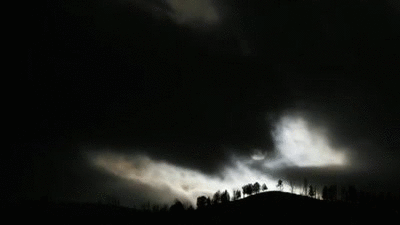
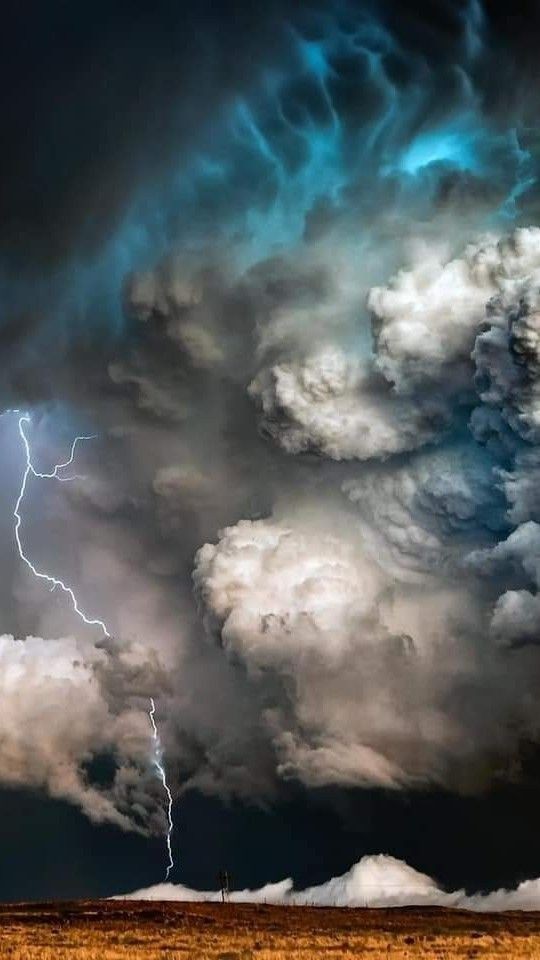
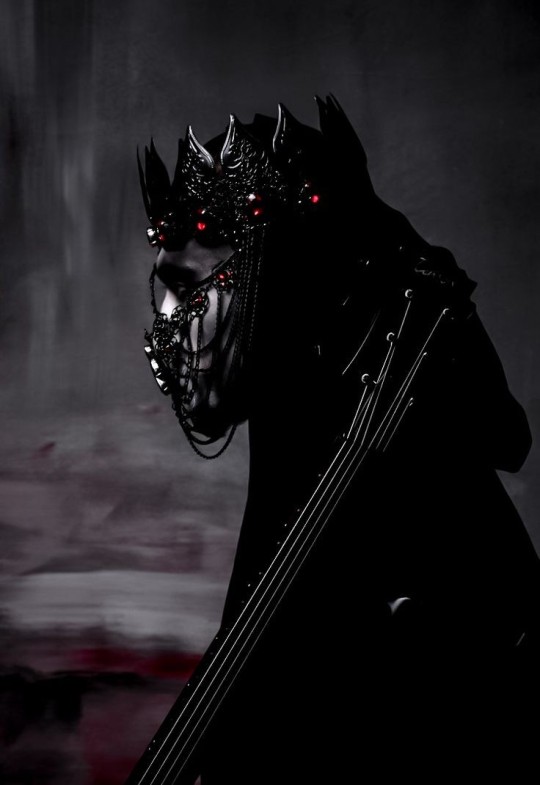

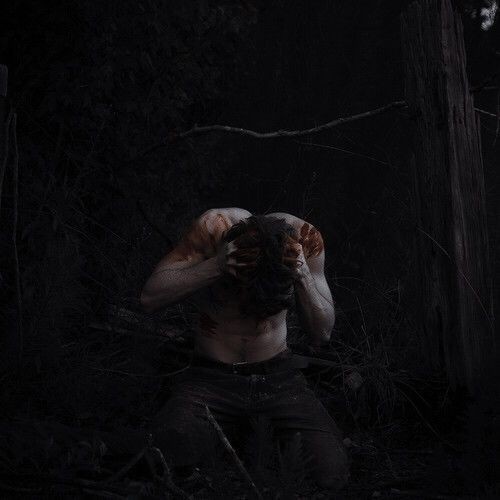
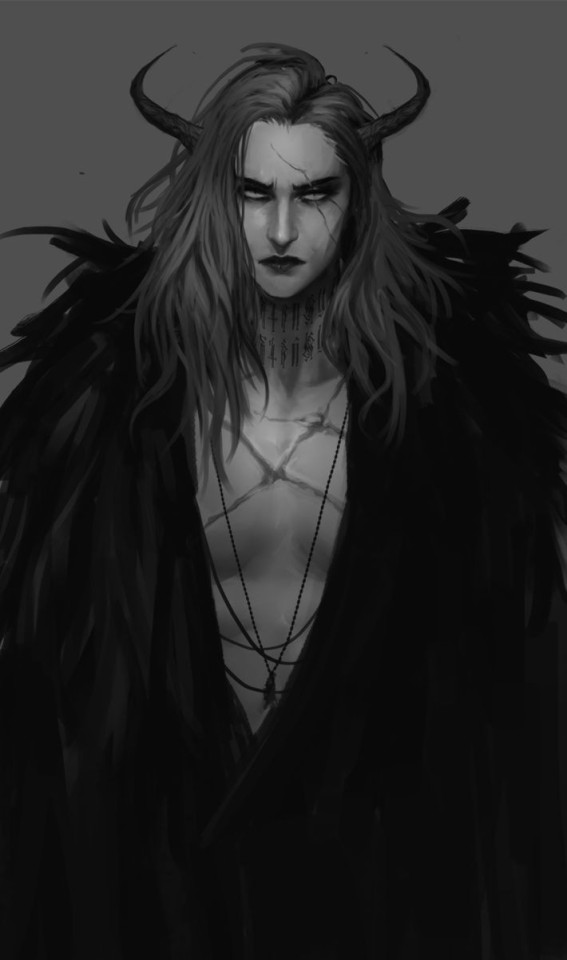
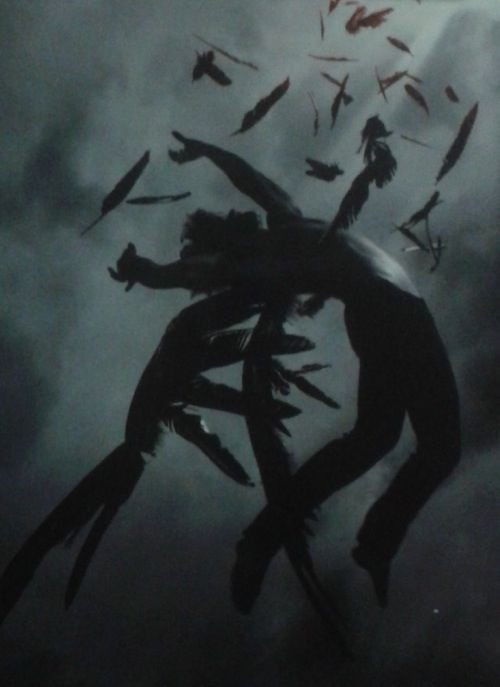
Baal/Bael/Ba'al = It is a title meaning "lord" or "master", There were many local Baals. The greatest, known as the “Great Baal”, is Son of the Father of the Gods, El, and Brother of the God of the seas and rivers, Yam-Nahar. Baal, known as “Knight of the Clouds”, is a God of fertility who represents the beneficial aspects of water such as rain. His lightning and thunder represent his Power, and the fertile land his beneficence.
#history#Baal#demon#God#God of agriculture#God of fertility#god of storms#god of fertility#weather god#God of weather#canaanite mythology#Phoenician#Biblical god#Pagan#fallen angel#Demon king#Biblical#old testament#Bible#Mythology#Phoenician mythology#canaanite religion#Canaanite
39 notes
·
View notes
Note
Sorry I was extremely out of it this am and assumed I communicated way more than I actually did - I saw someone ask you about lilith and it reminded me of ashtoreth. I read that she's the pre-monothestic Israelite Goddess consort of g-d, but I've never heard anyone say she's closed like lilith is despite being distinctly Israelite. Is there a distinction sonehow?
Distinctly Phoenician pantheon stuff would be its own thing and open like other types of Paganism imo, just don’t lift distinctly Jewish developments/interpretations to retroactively incorporate into Pagan worship and you should be fine.
15 notes
·
View notes